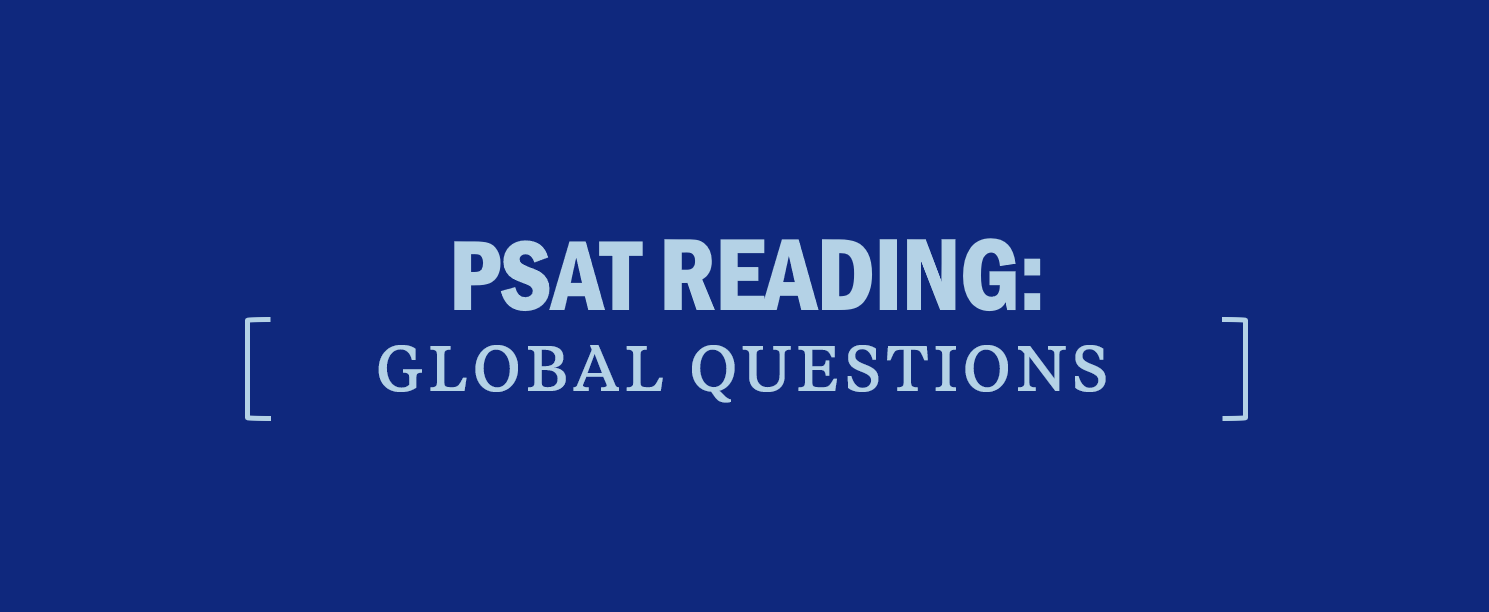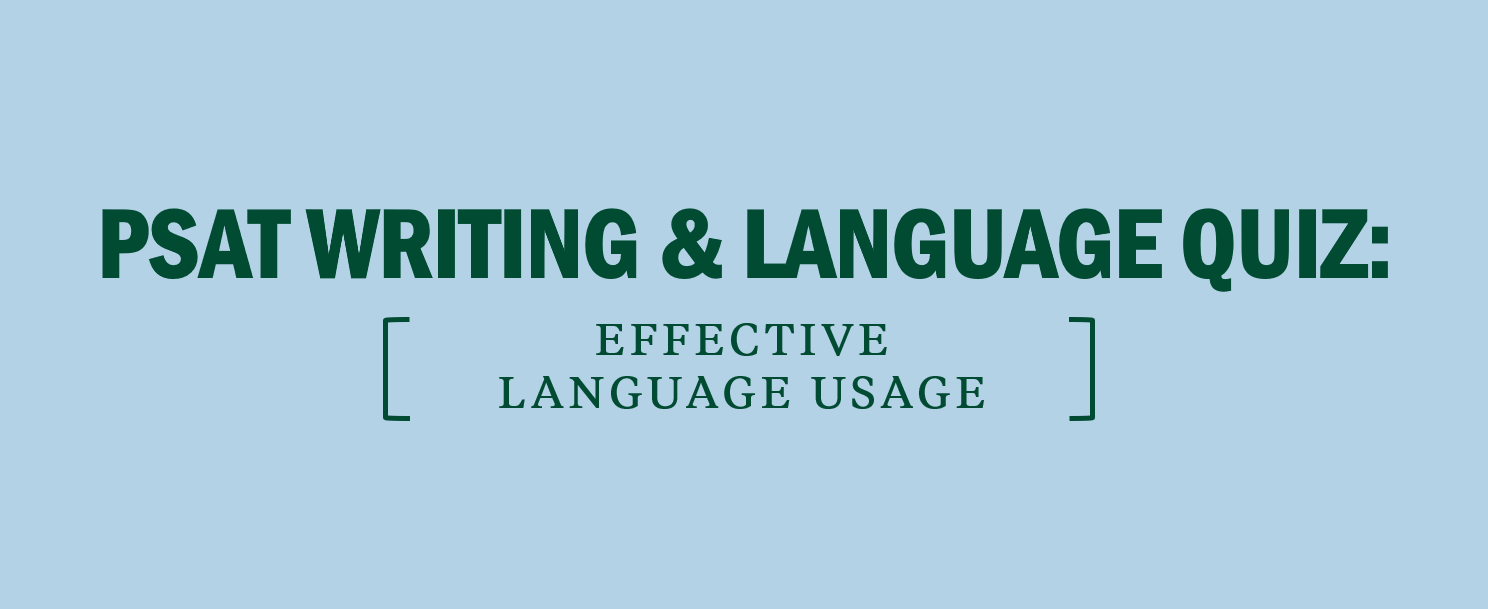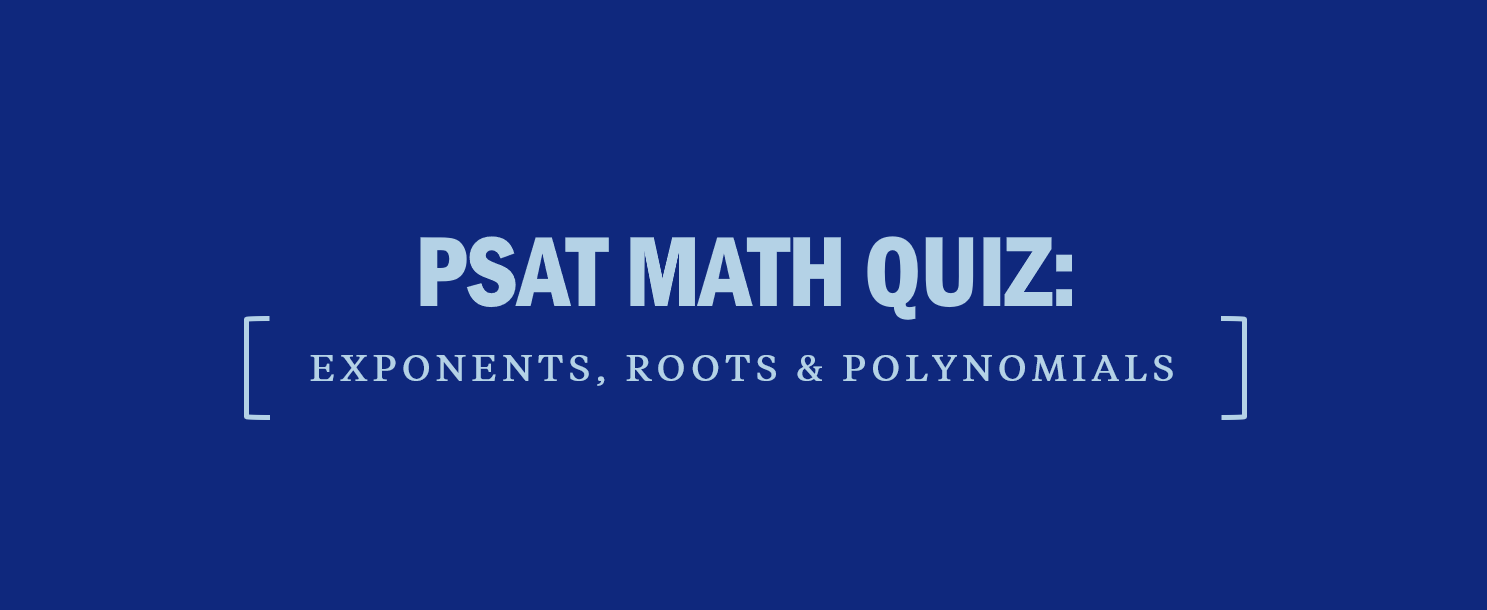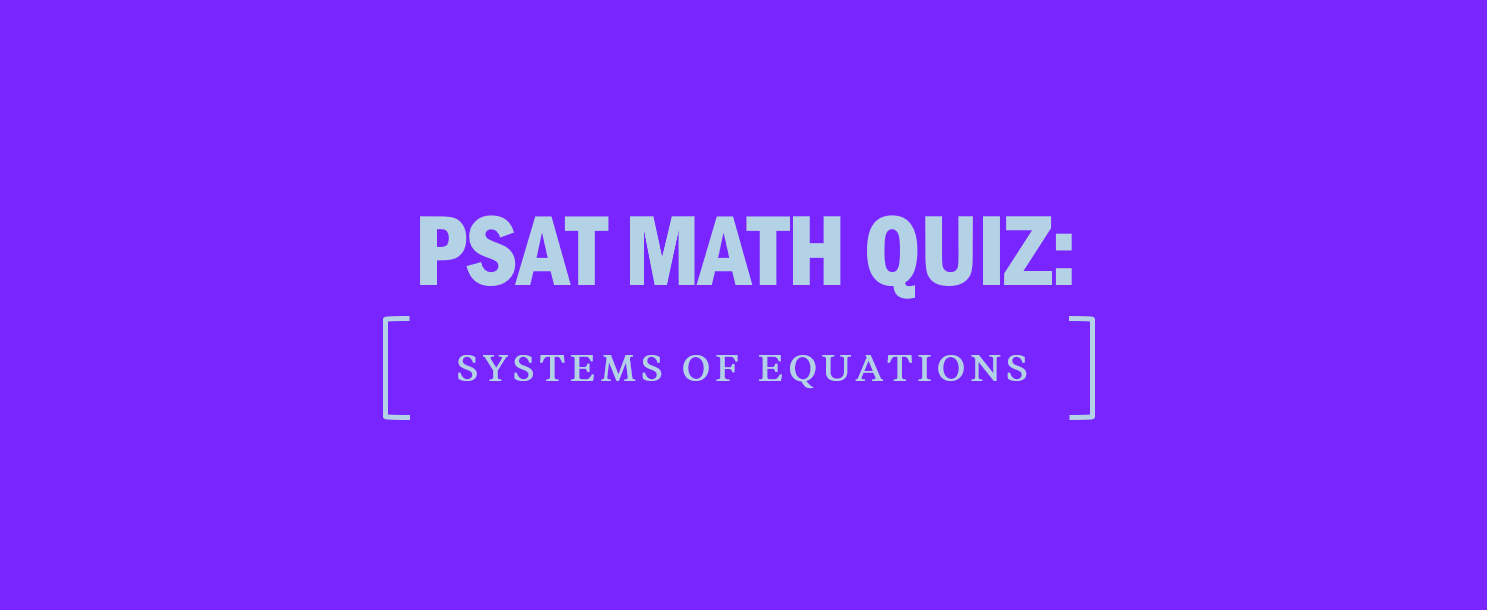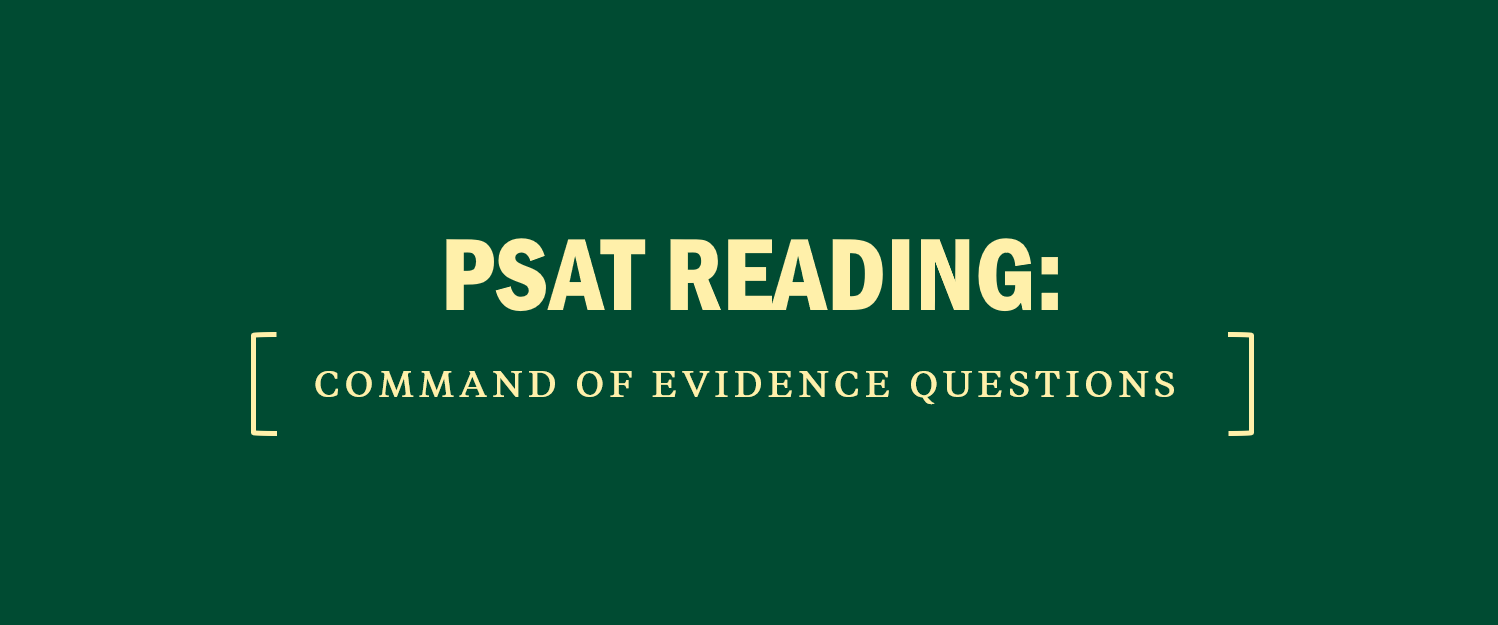PSAT Reading: Global Questions
Global questions on the PSAT require you to both identify explicit and determine implicit central ideas or themes in a text. If you pay attention to the big picture—the author’s central idea and purpose—while reading PSAT Reading passages, you will be able to answer Global questions with little to no rereading of the passage. To fully understand the central ideas and themes of a passage, you must synthesize the different points the author makes with his or her thesis statement, which you should underline when Passage Mapping.
Global questions may also ask you to choose a correct summary of the passage as a whole or identify key information and ideas within the passage. When presented with this type of Global question, you can use your Passage Map, which is essentially a brief summary of what you have read.
On Test Day
The introductory portion at the beginning of a PSAT Reading passage can be very helpful in determining the author’s central ideas and themes. Make sure you take the time on Test Day to read this information—it orients you to the passage.
You can recognize Global questions because they typically do not reference line numbers or even individual paragraphs. To confidently answer Global questions, you need to not only identify the central idea or theme of the passage but also avoid choosing answers that summarize secondary or supplementary points.
Note that there is a slight difference between nonfiction and fiction passages. Science and History/Social Studies passages are nonfiction and will have a definite central idea and thesis statement; U.S. and World Literature passages are fiction and will have a central theme but no thesis statement.
Remember!
History/Social Studies and Science passages on the PSAT Reading Test are just well-written essays or article excerpts. You can normally find the thesis statement of a well-written piece at the end of the introductory paragraph.
Previous: PSAT Reading: Science Passages
Next: PSAT Reading: Command of Evidence Questions

